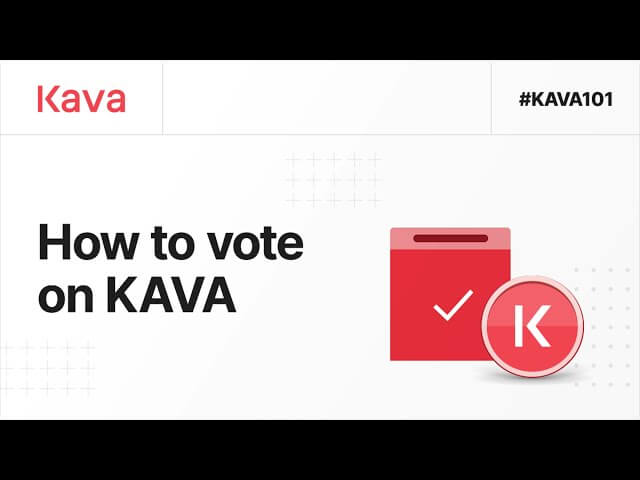Kava
The speed and flexibility of Ethereum combined with interoperability of Cosmos SDKKava is a high speed Layer 1 blockchain that combines the speed and interoperability of Cosmos with the developer power of Ethereum smart contracts.

Background Behind Kava (KAVA)
Kava was founded in 2018 by Ruaridh O’Donnell, Brian Kerr, and Scott Stuart. It was during this time that the co-founders established Kava Labs, a for-profit company aiming to advance the Kava platform.
Kava has consistently prioritized security and decentralization. Presently, the Kava blockchain ecosystem is advancing with the participation of over 100 application protocol teams, and the number continues to grow, aided by over 100 infrastructure teams.
To ensure the well-being and ongoing progress of decentralized networks and systems, the Kava ecosystem is supported by multiple independent international foundations. These foundations are responsible for allocating protocol-level funding to grantees. Their primary objective is to provide support for the development and sustainability of decentralized networks and systems.
Kava (KAVA) Basics
Kava was developed with a strong focus on enhancing its resources for protocol expansion. It is fortified by its Cosmos EVM technology, which facilitates maximum scalability, speed, security, and developer support.
Creators on Kava have the opportunity to earn a portion of the $750 million developer incentive fund through Kava Rise. This program employs a blockchain-based distribution method and aims to reward the top protocols on a monthly basis, based on their usage.
KAVA serves as the utility token within the Kava ecosystem. It functions as a reserve currency when the system is undercollateralized and is also utilized for governance proposals.
Kava ensures seamless interoperability between Cosmos and the Ethereum Virtual Machine (EVM), empowering developers to build within their preferred environment without compromising access to users and assets.
The on-chain incentive program, Kava Rise, ensures that the most exceptional builders in both the Ethereum and Cosmos ecosystems are duly rewarded for driving growth on Kava. Kava’s architecture enables unrestricted movement of users, assets, and projects between Kava and the industry’s leading ecosystems, powered by the lightning-fast Tendermint Core consensus engine.
Kava features a distinctive co-chain architecture that facilitates seamless asset transfers and interactions between the Ethereum and Cosmos ecosystems. This unlocks new opportunities and broadens access for developers and users alike.
Ethereum Blockchain
It’s worth noting that Kava does provide interoperability with Ethereum through the integration of the Ethereum Virtual Machine (EVM) technology. This allows developers to build applications on Kava that can interact with the Ethereum network, enabling cross-chain functionality and access to Ethereum assets. However, the KAVA token and Kava’s blockchain operations are not directly governed by Ethereum’s smart contract laws.
Kava (KAVA) Staking
Kava staking is a process that allows users to earn rewards for locking up their KAVA tokens in a staking pool. By staking Kava, users can earn rewards in the form of KAVA tokens, which can be used to pay for fees on the Kava platform or exchanged for other cryptocurrencies.
The staking mechanism in Kava fosters a more robust and secure network by incentivizing token holders to actively participate in the platform’s governance and consensus protocols. Stakers play a crucial role in validating transactions and maintaining the integrity of the blockchain, making the ecosystem more reliable and resilient.
Kava (KAVA) Mining
Kava Network is built upon the Cosmos ecosystem, which operates as a Proof of Stake (PoS) network. As a result, the Kava blockchain does not rely on traditional mining methods for transaction validation and block creation.
Unlike traditional mining, where computational power is utilized to solve complex mathematical problems, Kava’s Proof of Stake consensus mechanism secures the network by designating validators who are responsible for confirming and validating transactions. Validators stake a portion of their KAVA tokens as collateral, which serves as an assurance of their commitment to the network’s security and proper functioning.
Kava (KAVA) Speed and Transaction fees
Kava is indeed built on the Cosmos network, which utilizes the Tendermint consensus method. This consensus mechanism ensures the secure and efficient operation of the Kava blockchain. Moreover, Kava leverages the Practical Byzantine Fault Tolerance (PBFT) consensus algorithm specifically for its Proof-of-Stake (PoS) tokens.
The integration of Tendermint and PBFT brings notable benefits to the Kava ecosystem. Tendermint’s consensus algorithm enables fast transaction settlement, boasting an impressive speed of around 10,000 transactions per second. This high throughput allows for rapid and scalable processing of transactions within the Kava network.
Additionally, the combination of Tendermint and PBFT ensures the network’s robustness against incorrect or malicious transactions. If such transactions are detected, the system stalls to prevent their execution until the issue is resolved. This feature safeguards the integrity and correctness of transactions, maintaining the overall reliability and security of the Kava ecosystem.
By utilizing Tendermint and PBFT, Kava establishes a strong consensus mechanism that provides both speed and security. This foundation enables the platform to handle a significant volume of transactions efficiently while upholding the accuracy and integrity of the blockchain.
Kava (KAVA) Supply
Kava has a circulating supply of 576 million KAVA tokens, which is also its total supply. The current market capitalization of Kava stands at 450 million dollars.
Like many other cryptocurrencies, KAVA follows a maximum supply model, which means that the total number of KAVA tokens available is capped at 576 million. This limitation ensures that there will never be more than 576 million KAVA tokens in circulation.
By establishing a maximum supply, Kava aims to create scarcity and maintain the value of the tokens over time. This approach can potentially lead to increased demand and liquidity as the available supply remains fixed while the ecosystem grows and adoption expands.
The market capitalization of Kava, calculated by multiplying the current price of each KAVA token by the total number of tokens in circulation, currently amounts to 450 million dollars. The market cap serves as a measure of the overall value and perception of Kava in the cryptocurrency market.
With a limited supply and a growing market capitalization, Kava seeks to provide a balanced and sustainable ecosystem that supports the utility and value of its native token, KAVA.
Kava (KAVA) Security and Safety
Kava utilizes a highly-scalable and secure blockchain powered by the Cosmos SDK. This robust infrastructure allows for seamless integration with the Ethereum Virtual Machine (EVM), providing compatibility with Solidity-based smart contracts and enabling Solidity developers to leverage the scalability and security of the Kava Network.
Through the Inter-Blockchain Communication (IBC) protocol, Kava establishes a connection to over 30 chains within the Cosmos ecosystem, which collectively represent a value of over $60 billion. This integration offers a gateway for interoperability, allowing assets and data to flow between Kava and other interconnected chains within the Cosmos network.
With the integration of EVM compatibility, developers can harness the scalability and security features inherent to the Kava Network while capitalizing on the vast resources and liquidity available within the Cosmos ecosystem. This synergy empowers Solidity developers to bring their dApps to Kava, benefiting from a thriving ecosystem and unlocking new opportunities for innovation and growth.
Overall, Kava’s utilization of the scalable Cosmos SDK blockchain, combined with its EVM compatibility and integration with the broader Cosmos ecosystem through IBC, creates an environment that fosters collaboration, cross-chain connectivity, and the expansion of Solidity-based dApps within the secure and scalable framework provided by the Kava Network.
Kava (KAVA) Volatility
At the time of writing, the current price valuation of Kava stands at $0.77 per KAVA token. Its all-time low was recorded at $0.28 per KAVA token but it’s all-time high of $9.19 means the token is currently sitting 91.32% below its proven valuation potential.
It is important for investors and participants in the Kava ecosystem to be aware of the potential volatility in the token’s price. As with any investment, it is advised to carefully consider one’s own risk tolerance and conduct thorough research before engaging in trading or investing in Kava or any other cryptocurrency.
Review and Final Thoughts on Kava (KAVA)
As the blockchain evolves forward, Kava is set to establish more possibilities for collateralization from unalike tokens to USDX. Kava’s pioneer project has initiated the first of the three unique incentive programs to help the rapid growth of the Kava network. Other than this, Kava’s roadmap incorporates several launches that will make Kava one of the leading networks in the crypto space.

